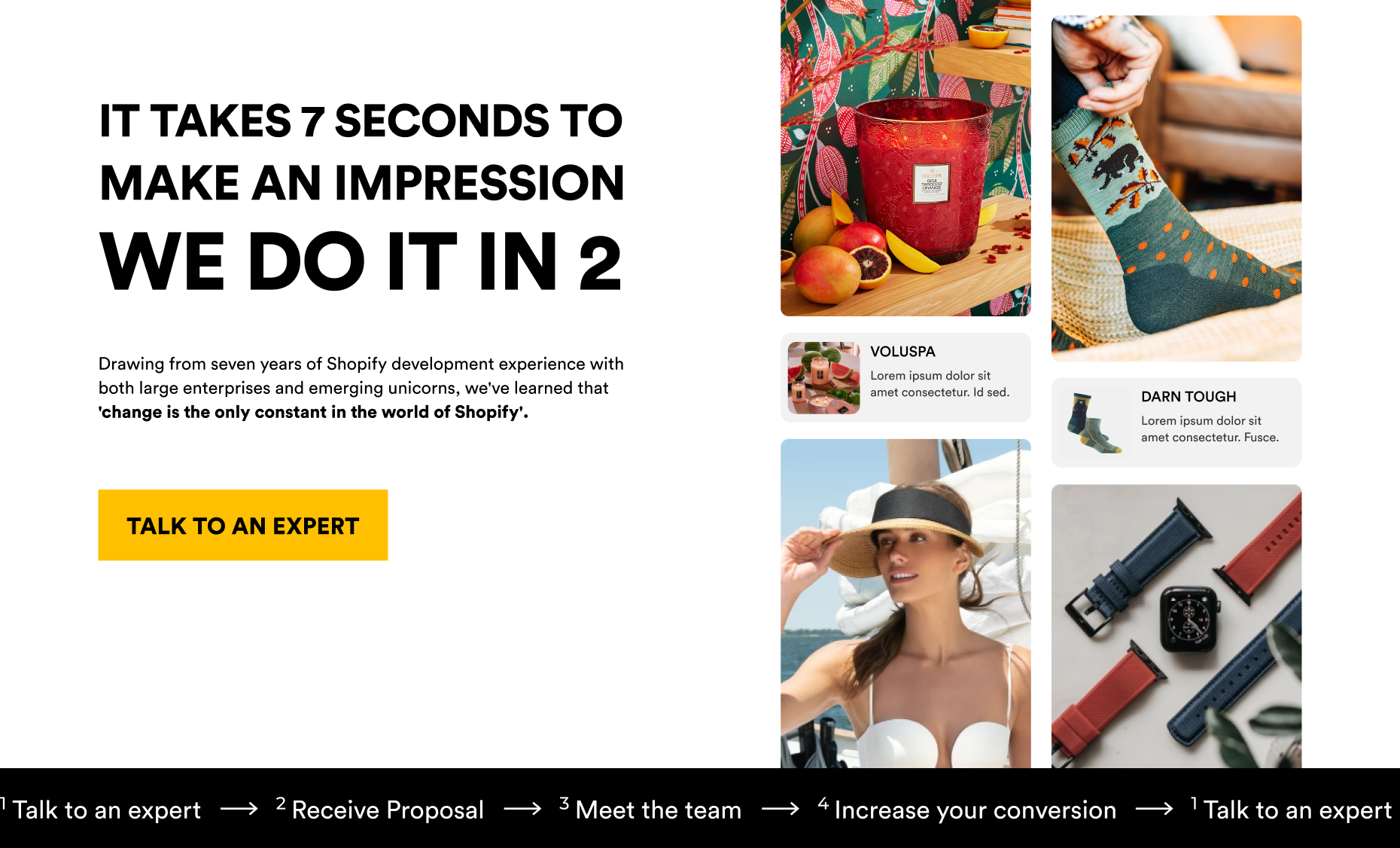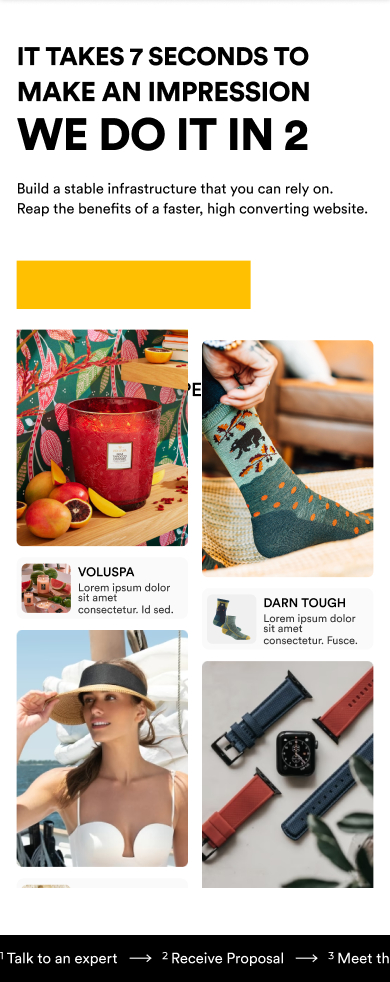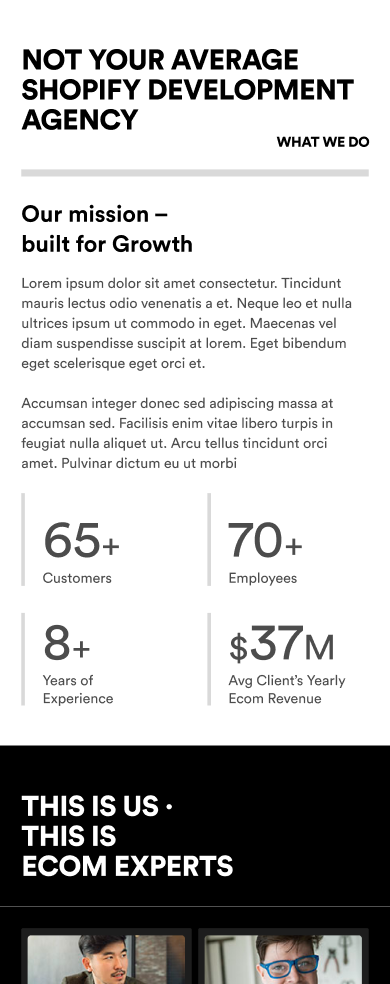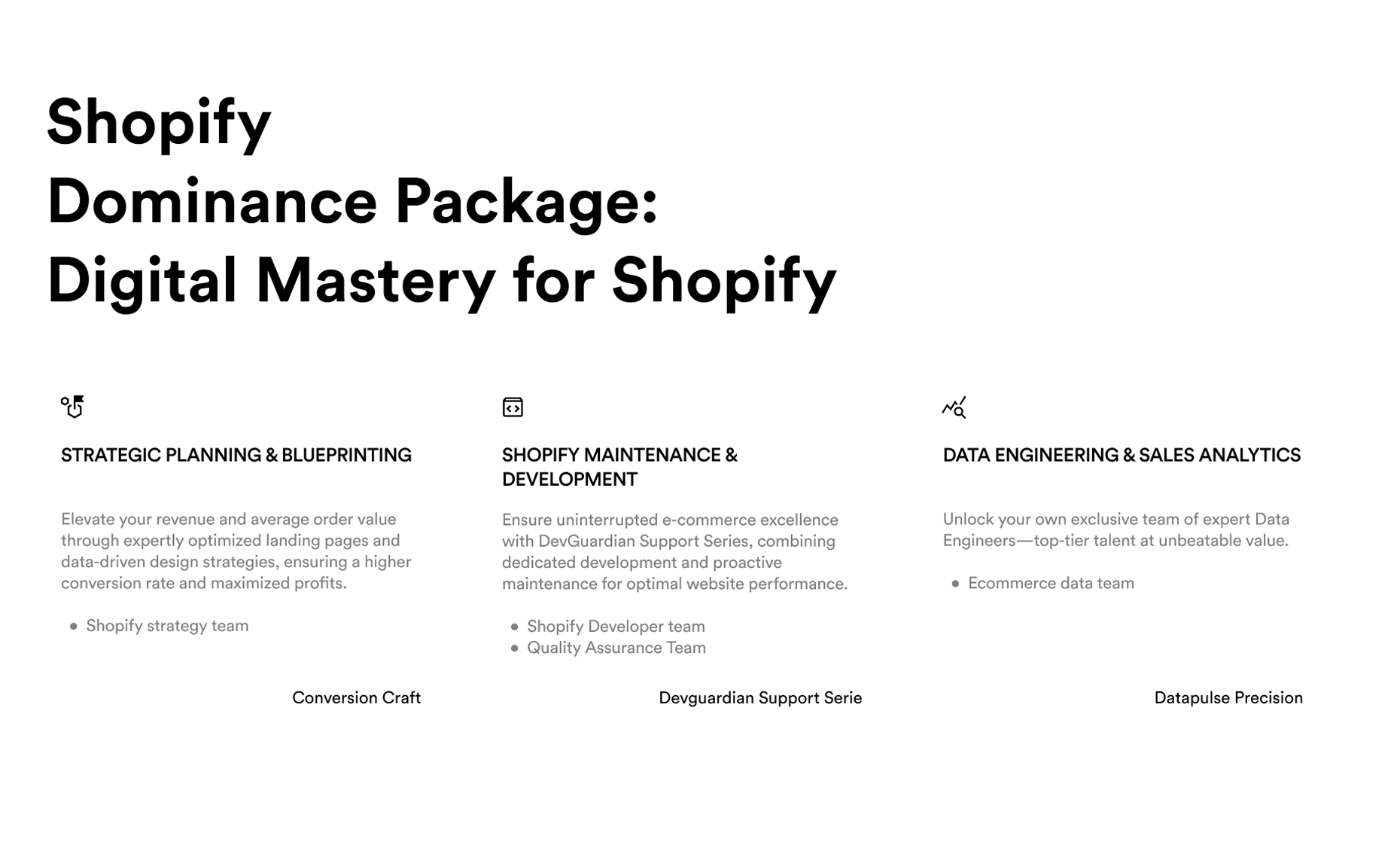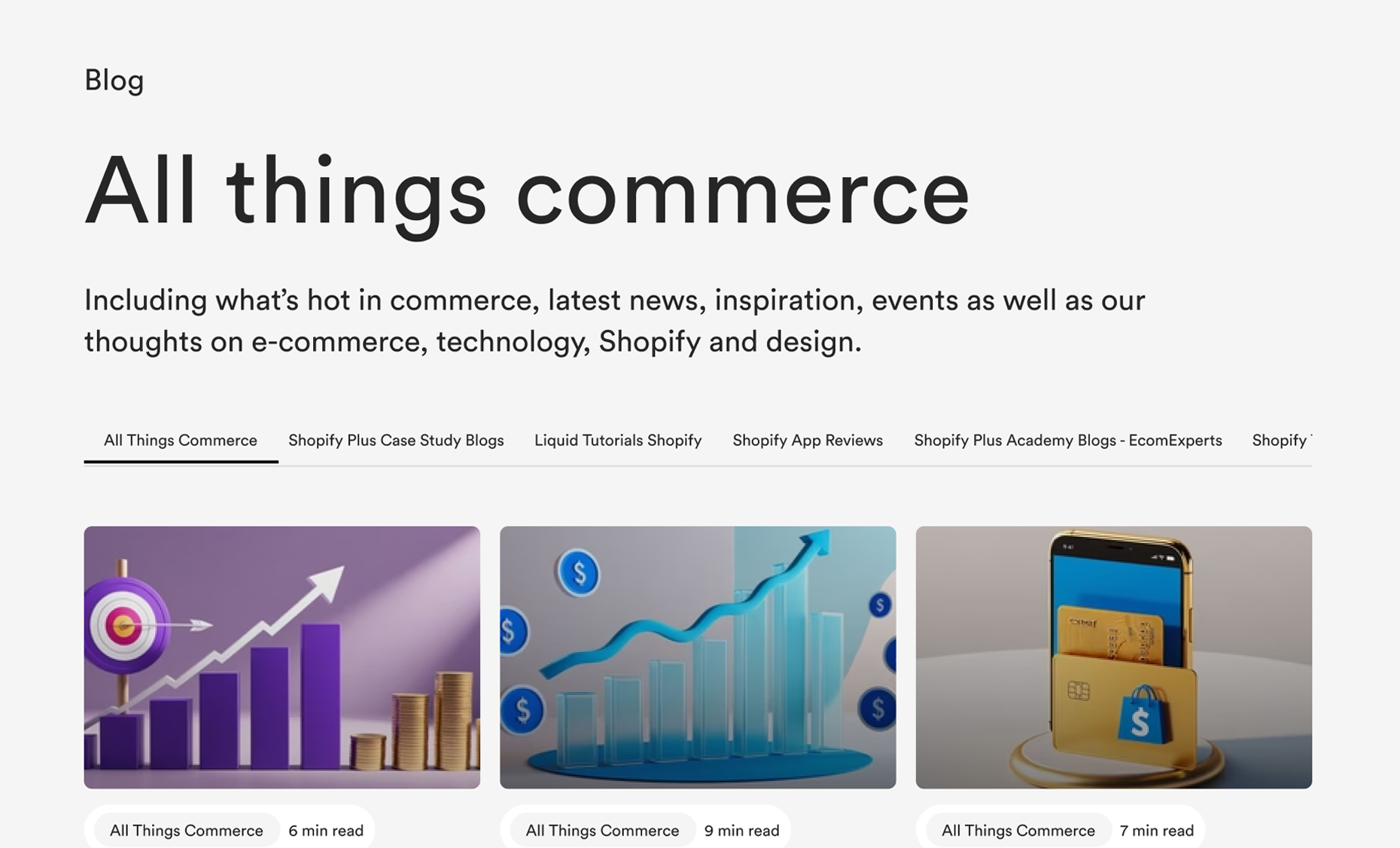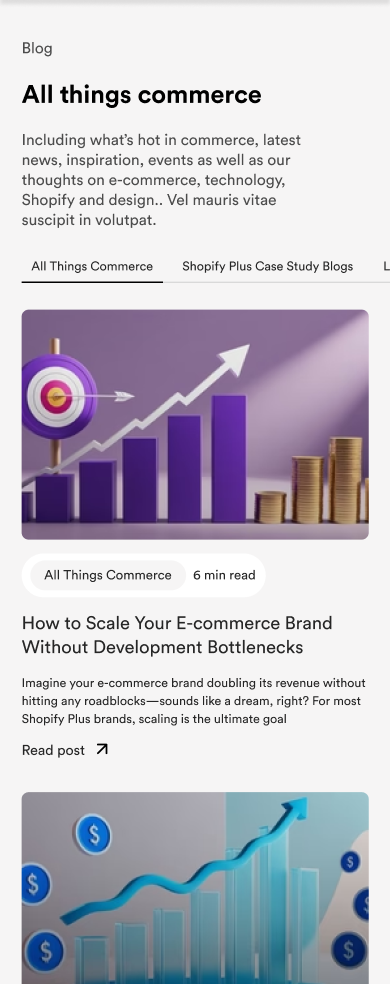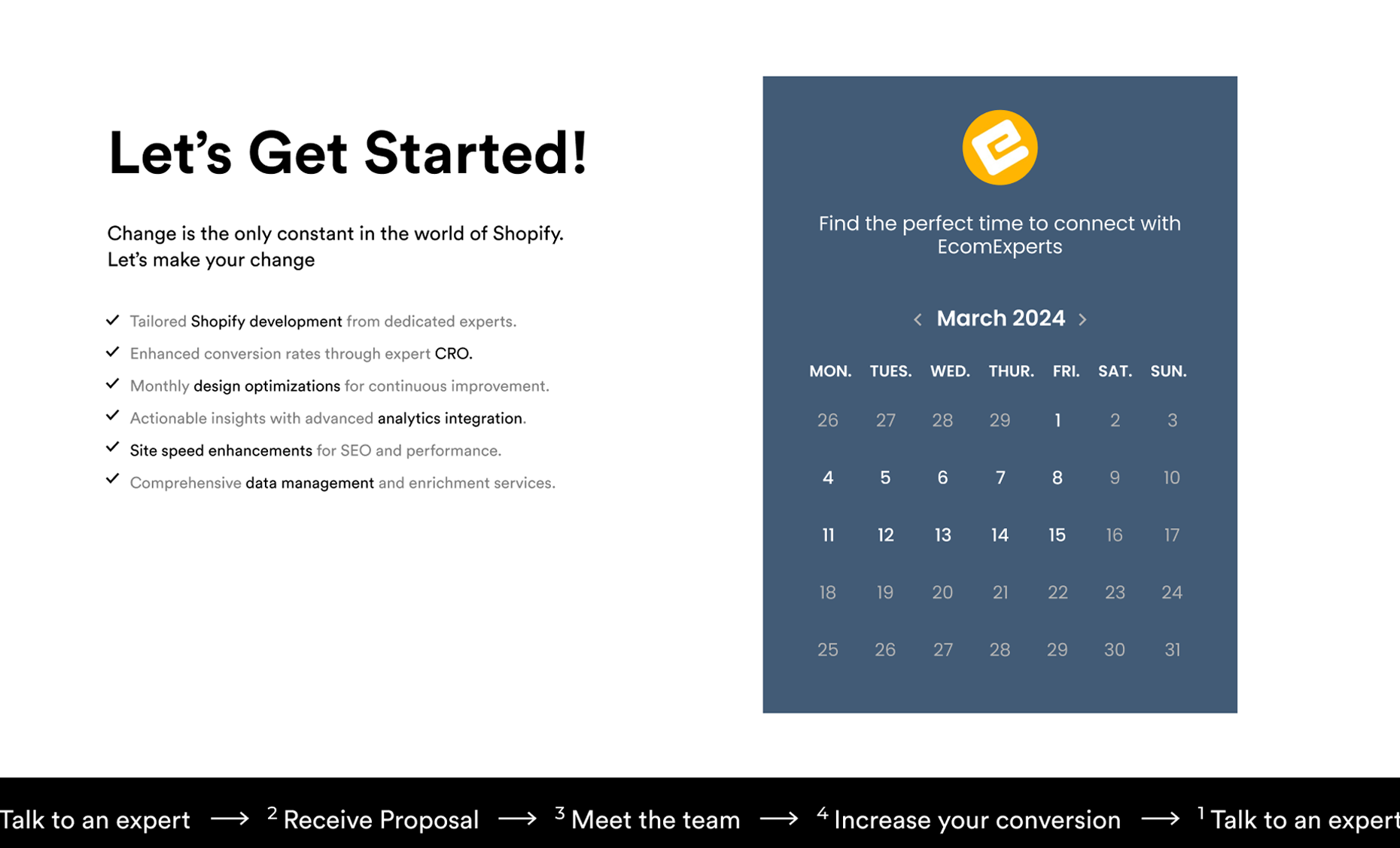Running a Shopify store is no easy feat, and if there’s one issue that keeps most ecommerce store owners up at night, it’s cart abandonment. In 2024, cart abandonment rates remain a significant challenge for online businesses, with an average global rate sitting at a staggering 70% across industries.
Abandoned carts don’t just represent lost revenue—they're an opportunity. By sending timely, targeted, and persuasive emails, you can not only recover abandoned carts but also re-engage your customers, creating stronger relationships and boosting brand loyalty.
Whether it's a simple reminder, a limited-time discount, or showcasing glowing customer reviews, these emails are your chance to convert indecision into sales.
Here's what you'll read in this blog:
- Why Customers Abandon Carts?
- What is an Abandoned Cart Email?
- Why Shopify Cart Abandonment Emails Matter?
- How to Set Up Shopify Cart Abandonment Email?
- What to Include in a Shopify Cart Abandonment Email
- Measuring the Success of Your Shopify Cart Abandonment Emails
- Shopify Cart Abandonment Email Best Practices
- 5 Shopify Cart Abandonment Email Ideas for Your Store
Why Customers Abandon Carts in the First Place?
Cart abandonment is a common problem faced by all ecommerce businesses, but understanding why it happens is crucial for creating strategies to prevent it. There are several reasons why customers abandon their carts before completing a purchase, and many of these reasons are directly related to the customer experience during checkout:
- Unexpected Costs: One of the most common reasons for cart abandonment is the appearance of unexpected costs during checkout, such as high shipping fees, taxes, or additional service charges. Customers don’t like surprises, and if the final cost exceeds their expectations, they may abandon their cart and search for a better deal elsewhere.
- Complicated Checkout Process: If the checkout process is too long, involves too many steps, or requires creating an account before making a purchase, many customers will abandon their carts out of frustration. 22% of shoppers abandon carts because the checkout process is too complicated.
- Lack of Payment Options: Customers have varying preferences for payment methods. If they don’t see their preferred option—be it PayPal, Apple Pay, or even installment services like Klarna—they may leave the site without completing the purchase.
- Concerns About Security: Trust is crucial when it comes to online payments. If a customer feels that the website is not secure or lacks trust signals such as security badges, they’re likely to abandon their cart. 17% of shoppers cite concerns about payment security as a reason for cart abandonment.
- Slow Load Times: Website performance directly impacts customer experience. If your store or checkout pages load slowly, it creates friction in the buying process. Studies show that even a one-second delay in load time can reduce conversions by 7%, leading to abandoned carts.
- Lack of Guest Checkout Option: Many customers want to complete their purchases quickly without having to create an account. Forcing users to sign up can be a deal-breaker for those who just want a simple, seamless experience.
- Just Browsing: Some customers add items to their cart while window-shopping. They may not have immediate intent to buy, but are instead using the cart as a wishlist or comparison tool.
What is an Abandoned Cart Email?
An abandoned cart email is a message sent to customers who leave items in their cart without completing the checkout process. Shopify enables store owners to automate these emails, prompting potential customers to return to their cart and complete the purchase. Shopify’s built-in feature makes it easy to send recovery emails with just a few simple setups.
Why Shopify Cart Abandonment Emails Matter?
Cart abandonment serve as timely reminders to customers who leave items behind without completing their purchase. These emails act as gentle nudges, reigniting customer interest and encouraging them to return to their cart.
Research shows that nearly 45% of cart abandonment emails are opened, and of those, 21% lead to a completed purchase. This makes them one of the most effective email marketing strategies for recovering lost revenue.
The importance of Shopify cart abandonment emails lies in their ability to tap into customer psychology. These emails leverage FOMO (Fear of Missing Out), the sense of guilt from an incomplete purchase, and sometimes offer incentives like discounts to further drive conversions.
By sending personalized and timely emails, Shopify store owners can significantly improve their chances of recovering abandoned carts, making these emails a must-have for boosting revenue and enhancing the overall customer experience.
How to Set Up Shopify Cart Abandonment Emails?
Shopify makes it simple to set up and automate cart abandonment emails directly from the Shopify admin dashboard. Here’s a step-by-step guide to getting started:
- Go to Settings in your Shopify admin.
- Select Checkout.
- Scroll down to the Abandoned Checkouts section.
- Enable the Send Abandoned Checkout Emails feature.
- Customize your email timing and message content.
By default, Shopify sends out a single cart abandonment email 10 hours after a shopper leaves items in their cart. However, you can adjust this timing based on your audience and preferences. Some experts recommend sending multiple follow-up emails at intervals like 1 hour, 24 hours, and 48 hours post-abandonment.
What to Include in a Shopify Cart Abandonment Email
To make your Shopify cart abandonment email as effective as possible, you need to focus on crafting a message that resonates with your audience. Here's what to include:
- Personalization: Use the customer’s name and mention the specific items they left in their cart. Personalized emails are more likely to grab attention and drive action.
- Clear Call-to-Action: Include a prominent, easy-to-click CTA like "Complete Your Purchase" or "Return to Your Cart" to guide users back to their abandoned cart.
- Incentives or Discounts: Offering a small discount or free shipping can motivate customers to return and complete the transaction.
- Product Images: Visual reminders of the items in the customer’s cart can be incredibly persuasive, making them more likely to click through.
- Sense of Urgency: Create urgency by letting customers know that stock is limited or the discount expires soon. Phrases like "Your items are almost gone!" or "Complete your purchase within 24 hours to get 10% off" can encourage quicker decisions.
Measuring the Success of Your Shopify Cart Abandonment Emails
To make sure your Shopify cart abandonment emails are performing well, you need to track a few key metrics:
- Open Rate: How many people opened your email? A low open rate may indicate that your subject line needs improvement.
- Click-Through Rate (CTR): How many people clicked the link in your email? This shows how effective your message and call-to-action are.
- Conversion Rate: How many people completed their purchase after clicking through? This is the ultimate metric of success for your cart abandonment campaign.
Shopify and third-party apps like Klaviyo or Omnisend provide built-in analytics to help you monitor these metrics, so you can continuously optimize your emails for better results.
Shopify Cart Abandonment Email Best Practices
Optimizing your Shopify cart abandonment email is not just about sending reminders—it’s about creating value and relevance for the customer. Here are some best practices for ensuring your emails hit the mark:
- Use a Strong Subject Line: The subject line is the first thing your customer will see, so make it compelling. Examples: "Oops! You left something behind…" or "Complete your purchase today and enjoy 10% off."
- Time Your Emails Strategically: Some stores see success by sending the first email 1 hour after abandonment, a second email 24 hours later, and a final reminder within 48 hours. Test different timing to see what works best for your audience.
- Segment Your Audience: Not all abandoned carts are the same. Use Shopify’s customer segmentation features to tailor cart abandonment emails based on customer behavior, location, or cart value.
- Add Social Proof: Including product reviews or testimonials can help build trust and reduce hesitation. Seeing positive feedback from other customers might convince the buyer to complete their purchase.
- Mobile-Friendly Design: With many customers shopping on mobile devices, it’s crucial to ensure that your cart abandonment emails are optimized for mobile to avoid losing potential sales.
5 Shopify Cart Abandonment Email Ideas for Your Store
Here 5 cart abandonment email ideas that you can use for your Shopify store to retain and convert your customers:
1. The Gentle Reminder Email
Sometimes, a simple reminder is all it takes to nudge customers back to your store. A gentle reminder email is the first in your cart abandonment sequence, designed to give customers a subtle nudge without being pushy. It’s not about offering discounts or creating urgency—yet. This initial touchpoint focuses on providing value by reminding customers of the items they left behind and making it easy for them to return and complete their purchase.
Best Practices for a Gentle Reminder Email
- Include Product Images: Visuals are powerful. Include clear images of the products left in the cart to jog the customer’s memory and reignite their interest.
- Clear Call to Action (CTA): Make it straightforward for the customer to return to their cart with a prominent and easy-to-click CTA button, such as “Complete Your Purchase” or “Return to Your Cart.”
- Friendly and Informal Tone: The tone should be friendly, casual, and helpful. You’re not pressuring them; you’re just letting them know that their cart is still waiting.
- Short and Sweet: Keep the email concise. The goal is to remind, not to overwhelm.
Example of a Gentle Reminder Email
- Subject Line: “Hey [Name], you left something behind!”
- Body: “We noticed you left a few items in your cart. No worries, we’ve saved them for you! Click below to complete your order whenever you’re ready.”
Why It Works
The key here is subtlety. You’re providing a helpful reminder without the hard sell. This type of email works best when sent within the first 1-2 hours after the cart has been abandoned. Research indicates that abandoned cart emails sent within an hour have a 20.3% conversion rate, making this initial reminder crucial.
When to Send
- Timing: Send this email within 1-2 hours after cart abandonment. This window is optimal as the customer’s interest is still fresh, increasing the likelihood of them returning to complete the purchase.
By sending a gentle reminder email, you’re opening the door for further communication, setting the stage for follow-up emails that can gradually become more persuasive if the customer doesn’t act on this first nudge.
2. Offer a Discount to Seal the Deal
Sometimes, hesitation boils down to cost. Offering a discount in your cart abandonment email can be the perfect incentive to nudge customers toward completing their purchase. When a customer is on the fence, a small discount can be the tipping point that turns their indecision into action. This strategy works particularly well when customers feel the price is a little steep or when they are comparing products across different stores.
Best Practices for Offering Discounts
- Use it Strategically: Don’t offer discounts in the first abandoned cart email. Use this tactic in the second or third email to avoid conditioning customers to wait for discounts.
- Create Urgency: Pair the discount with a limited-time offer to create a sense of urgency. This can be as simple as, “Use this code within the next 24 hours to get 10% off!”
- Personalize the Message: Use the customer’s name and reference the items in their cart to make the email feel personal. For example, "Hey [Name], get 10% off on the items you loved."
- Clear Call to Action (CTA): Include a compelling CTA that highlights the offer, such as “Redeem Your Discount Now” or “Complete Your Purchase with 10% Off.”
Example of a Discount Email
- Subject Line: “Get 10% Off! Complete Your Purchase Today”
- Body: “We noticed you left some great items behind. To help you make your decision, here’s a 10% discount just for you! Use code ‘SAVE10’ at checkout, but hurry—this offer is valid for the next 24 hours only.”
Why It Works
Offering a discount addresses the hesitation around price, one of the most common reasons for cart abandonment. According to industry research, 54% of customers are likely to complete their purchase if offered a discount. By adding urgency through a limited-time offer, you create a sense of FOMO (Fear of Missing Out) that encourages customers to act quickly.
When to Send
- Timing: Send this email as the second or third follow-up, typically 24 to 48 hours after the initial cart abandonment. This ensures you’ve given the customer time to reconsider their purchase before presenting them with an added incentive.
Offering a discount not only entices customers to return and complete their purchase but also shows them that you value their business. Next, let's explore how showcasing social proof in your abandoned cart emails can build trust and give hesitant customers that final push they need.
3. Highlighting Social Proof: Build Trust with Reviews
In ecommerce, trust is everything. Often, customers abandon their carts because they’re uncertain about the product or the brand. This is where social proof comes into play. By showcasing positive reviews, testimonials, or user-generated content (UGC), you can build credibility and reassure hesitant customers that they’re making a good decision. Think of this as letting your satisfied customers do the selling for you.
Best Practices for Using Social Proof in Abandoned Cart Emails
- Include Real Customer Reviews: Highlight product reviews or testimonials from customers who have purchased and enjoyed the products left in the cart. Keep them short, authentic, and relatable.
- Use Ratings and Star Reviews: Including star ratings or product satisfaction scores makes it easier for customers to gauge the popularity and quality of the items they’re considering.
- Incorporate User-Generated Content (UGC): If possible, feature images or social media posts from real customers using the product. This visual reinforcement adds authenticity to your message.
- Clear Call to Action (CTA): Direct customers back to their cart with a CTA like, “See Why Others Love It” or “Join Our Happy Customers.”
Example of a Social Proof Email
- Subject Line: "See What Others Are Saying About [Product Name]!"
- Body: "Not sure if [Product Name] is right for you? Here’s what some of our customers have to say: [Insert a few short reviews]. These happy customers can’t be wrong—complete your purchase today!"
Why It Works
Social proof leverages the psychological phenomenon where people look to the actions and opinions of others to guide their own decisions. 88% of consumers trust online reviews as much as personal recommendations, so featuring positive feedback in your emails can significantly increase conversions.
When customers see that others have had a positive experience with the product, they’re more likely to trust your store and feel confident completing their purchase.
When to Send
- Timing: This email can be sent as part of your second or third follow-up sequence, typically 24 to 48 hours after cart abandonment. By this time, the customer may have already received a gentle reminder and a potential discount offer. Adding social proof now can serve as the final reassurance they need to make a purchase.
Using social proof in your abandoned cart emails builds credibility and trust, which are often the final barriers to conversion. Up next, we’ll explore how creating a sense of urgency with time-sensitive offers can drive action and bring customers back to complete their orders.
4. Create Urgency with Time-Sensitive Offers
One of the most effective psychological triggers to motivate action is urgency. Customers are more likely to complete a purchase if they feel they might miss out on a good deal or opportunity. By incorporating time-sensitive offers into your cart abandonment emails, you create a sense of FOMO (Fear of Missing Out) that can nudge customers to act quickly. This strategy taps into the human desire to avoid losing something valuable, making it a powerful tool in your email marketing arsenal.
Best Practices for Creating Urgency in Abandoned Cart Emails
- Use Countdown Timers: Including a countdown timer in your email can visually show customers how much time they have left to complete their purchase. It serves as a constant reminder that they need to act fast.
- Limited-Time Discounts or Free Shipping: Offer a discount or free shipping for a limited period. Phrases like "Complete your purchase within the next 24 hours to get 15% off" can create a sense of immediacy.
- Mention Limited Stock: If the items in the cart are low in stock, mention it. For example, "Only a few items left in stock! Hurry before they're gone."
- Clear and Compelling CTA: Your call-to-action should reflect the urgency. Use phrases like "Shop Now Before It's Gone" or "Claim Your Discount Today" to prompt quick action.
Example of an Urgency Email
- Subject Line: "Hurry! Your Cart Will Expire in 24 Hours!"
- Body: "Don't miss out on the items you love. We're holding them for you, but only for the next 24 hours! Complete your purchase now and get 10% off with code ‘SAVE10.’"
Why It Works
Urgency taps into the human psyche’s natural aversion to loss. Studies show that creating a sense of urgency can increase conversion rates by up to 60%. When customers see that they might lose out on a product or a special offer, they’re more likely to act fast to avoid missing the opportunity.
When to Send
- Timing: This urgency-driven email is best used as the third email in your abandonment sequence, typically sent 48 hours after the initial cart abandonment. By this point, you’ve given the customer a reminder and possibly a discount. The urgency email serves as the final push to get them to complete their purchase.
By creating a time-sensitive offer, you're not only motivating customers to act quickly but also providing them with an incentive to finalize their purchase, thus converting a potentially lost sale into revenue.
5. Cross-Sell with Related Products
Sometimes, customers abandon their carts because they’re not fully convinced about their original selection. This is where cross-selling comes into play. By offering related products or alternatives in your abandoned cart email, you give customers more options and reignite their interest. This strategy works well when customers might be looking for variety or need a little extra encouragement to complete their purchase.
Best Practices for Cross-Selling in Abandoned Cart Emails
- Offer Related Products: Suggest products that are similar or complementary to the items left in the cart. For example, if a customer left a camera in their cart, suggest related accessories like lenses, camera bags, or memory cards.
- Highlight Best-Sellers or Popular Items: Showcase items that are frequently purchased by other customers, especially if they are relevant to what’s in the cart. This can create a sense of validation and encourage the customer to explore other options.
- Use Personalized Recommendations: Utilize AI-driven product recommendation tools to personalize the cross-sell suggestions based on the customer’s browsing history and preferences.
- Clear CTA: Include a CTA like "Explore More Options" or "Check Out Similar Items" to guide the customer back to your store.
Example of a Cross-Sell Email
- Subject Line: "Not Sure About Your Selection? Here Are Some Alternatives!"
- Body: "We noticed you left [Product Name] in your cart. Still deciding? Check out these other options that might be exactly what you're looking for!"
Why It Works
Cross-selling works because it gives customers additional options and may introduce them to products they hadn’t considered. It can also reassure them that they have made a good choice by highlighting complementary items that enhance their original selection.
35% of Amazon's revenue comes from cross-selling through product recommendations. When done right, cross-selling can increase average order value (AOV) and boost overall revenue.
When to Send
- Timing: This cross-sell email can be sent as the second or third email in your abandonment sequence, around 24 to 48 hours after the initial abandonment. By this point, the customer has had time to reconsider their options, and you’re presenting them with alternatives to help them make a final decision.
Cross-selling not only helps recover abandoned carts but also encourages customers to explore other products in your store, potentially leading to a larger purchase.
With these five strategies—gentle reminders, discounts, social proof, urgency, and cross-selling—you have a powerful toolkit to address different reasons for cart abandonment and guide customers back to complete their purchase.
Conclusion
Cart abandonment is an inevitable challenge for every Shopify store owner, but it doesn't have to be a dead end. By implementing a well-crafted cart abandonment email strategy, you can recover a significant portion of lost sales and turn hesitant shoppers into loyal customers. The key is to approach your emails thoughtfully—using different tactics to address the various reasons customers abandon their carts in the first place.
- Gentle Reminder emails serve as a simple nudge, reminding customers of their pending purchases without any hard selling.
- Discount Offers can provide the extra incentive needed to overcome price hesitation.
- Social Proof builds trust by showcasing the positive experiences of other customers, helping to reassure those on the fence.
- Urgency and Time-Sensitive Offers create FOMO (Fear of Missing Out), prompting customers to act quickly before they miss a great deal.
- Cross-Selling introduces customers to related products or alternatives, helping them find exactly what they're looking for and increasing your chances of completing the sale.
The ultimate goal of these emails is not just to recover abandoned carts but to enhance the overall customer journey. By delivering personalized, timely, and value-driven messages, you can turn an abandoned cart into an opportunity to strengthen customer relationships and increase long-term loyalty. Remember, the key to success lies in testing different approaches, analyzing the results, and continuously optimizing your email strategy.
Abandoned cart emails are more than just a recovery tool; they’re a crucial part of your marketing toolkit that helps you understand your customers better and tailor your offerings to meet their needs.
Now that you're equipped with these five powerful cart abandonment email ideas, it's time to put them into action and start turning lost sales into revenue for your Shopify store.
FAQs
1. How do I send an email to abandoned carts in Shopify?
Shopify has a built-in feature that allows you to automatically send abandoned cart emails. To set this up, go to your Shopify admin, navigate to "Settings," then "Checkout," and scroll down to the "Abandoned Checkout" section.
Here, you can customize the settings for sending automated abandoned cart emails, including the timing and content of the emails. You can also use third-party apps like Klaviyo or Omnisend for more advanced customization and sequencing options.
2. What should I write in an abandoned cart email?
An effective abandoned cart email should be concise, engaging, and provide value to the customer. Key elements to include are:
- A friendly reminder of the items left in the cart
- Clear images of the products
- A compelling call to action (CTA) to return and complete the purchase
- Optional: An incentive like a discount or free shipping
- Optional: Social proof, such as customer reviews or testimonials
The tone should be helpful rather than pushy, encouraging customers to return to their cart without feeling pressured.
3. How many abandoned cart emails should I send?
A successful abandoned cart recovery strategy typically involves a series of 2-3 emails:
- First Email: A gentle reminder sent within 1-2 hours of cart abandonment.
- Second Email: A follow-up email, often with an incentive like a discount, sent within 24 hours.
- Third Email: A final reminder, possibly including urgency (limited-time offer) or social proof, sent within 48-72 hours after the cart was abandoned.
Spacing these emails out allows you to gently nudge the customer without overwhelming them.
4. When is the best time to send abandoned cart emails?
Timing is crucial when sending abandoned cart emails. The best practices are:
- First Email: Send within 1-2 hours of cart abandonment while the customer is still in the mindset of shopping.
- Second Email: Send 24 hours after abandonment, possibly including a discount or special offer.
- Third Email: Send 48-72 hours after the initial abandonment, emphasizing urgency or highlighting social proof.
By targeting these specific windows, you increase the chances of catching the customer at the right time and encouraging them to complete their purchase.
5. Can I personalize abandoned cart emails on Shopify?
Yes, personalization can significantly improve the effectiveness of your abandoned cart emails. Shopify and various third-party apps allow you to personalize emails by including:
- Customer’s name
- Specific products left in the cart, including images and descriptions
- Personalized offers, such as discounts based on their shopping behavior
- Dynamic content, like product recommendations based on browsing history
Personalization makes your emails more engaging and relevant, increasing the likelihood of recovering the abandoned cart.


